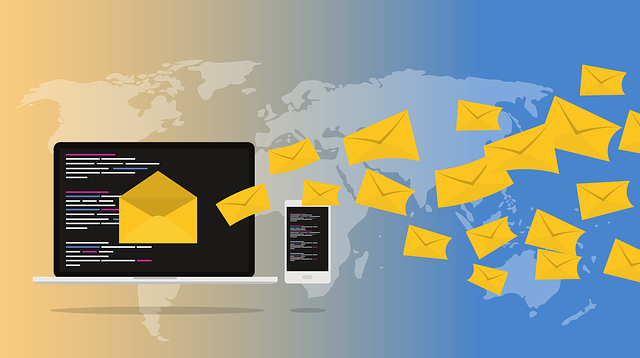On a busy Friday at 5:42 p.m., for example, a promo went to spam because it came from a free Gmail, and the dining room stayed half quiet while the fryer hissed, the host stand blinked, and the email inbox hid the deal. I saw the same menu, the same offer, the same list—only the from line changed—yet replies dried up, opens dipped, and doubt crept in among users.
Switching to a branded domain with SPF, DKIM, and DMARC did more than clean headers; it steadied trust, lifted inbox placement across Gmail, Yahoo, and Outlook, and turned skimmers into bookers, because a professional email address that includes your business email address looks right, routes right, and reads right. The thesis is simple: the right sender, using your company name, lifts results in real restaurants.
Picture one concrete thing: a small metal bell at the host stand, one clear verb: send, and one setting: Friday night—tie them to a single change-path, from overwhelm to control, and you’ll see why a proper address shapes replies, seats, and sales.
Importance To Have Business Email Address with a Job Title
On average, people exchange 126 business emails daily, highlighting the volume of email as a key communication channel in business.
Boost customer satisfaction with just a few clicks
Most-Loved Features:
- On-demand drivers
- Real-time GPS tracking
- Delivery confirmation photos
- Over 50% of customers report a smoother delivery experience
What is A Professional Email Address for a Restaurant
Guests trust addresses that match your signage. Your personal email address should be your first and last name, not a free mailbox, as it reflects your online identity.
Think of it like replying from your own place, not a borrowed couch. You hold the keys, can hand them to staff, and nothing walks away when roles change. A custom domain for a branded email address for professional communication quietly signals you’re established and ready to serve. You’re not improvising tonight.
When your business email address matches your brand, guests feel safe replying, and you keep control. You’re doing this right, especially when managing your job and your own business.
The Global Email Accounts Traffic
The global email traffic reached over 347 billion emails sent daily by 2023, with business emails constituting a substantial portion.
How It Differs From Personal or Unprofessional Emails
Moving off @gmail to your own domain name changes ownership, trust, and scale. With a custom domain business email, accounts senders’ your domain, so history and access stay with you when staff turn over. A matching From line boosts confidence and helps the sender’s reputation for email deliverability. This applies to a professional email address as well.
Role addresses make growth simple—info@ and events@ forward to today’s team and can be reassigned tomorrow without changing what guests see. Meanwhile, a personal inbox ties your communication to one person and risks messy handoffs. You won’t miss threads during transitions, which is crucial for most people managing communication.
Build it with a light, testable setup, then expand once it’s working. Here’s a compact path for business email.
Inputs: your domain name and an email host, like Google Workspace or Microsoft 365.
Steps: create role addresses (info@, events@); add SPF and DKIM to your DNS; send a test to a Gmail inbox.
Checks: open the message’s headers and confirm SPF and DKIM show “pass.”
Pitfalls: DNS changes can take time; avoid mismatching From and Reply-To domains.
Smallest test: send one confirmation email and confirm both passes in headers.
Free inboxes may work for a pop-up week, but major providers now pay closer attention to authentication and domain alignment. For alignment, use a From address whose domain is authenticated by SPF or DKIM under the same domain—DMARC-aligned in practice.
Alignment removes avoidable risk, and the role addresses make staffing changes painless. Content quality and complaints can do more harm and still influence the placement of such email addresses.
It is better to buy a domain, create two role addresses, and run the header test today. Your business email account will feel as put-together as your front door.
Why a Professional Email Address Matters For Restaurants
Guests judge you in a split second. A professional email address turns that glance into bookings.
It is better to put your domain in the from line and you’ll look credible, land in more inboxes, and get more replies—so more quotes become confirmed covers.
Would you send a deposit to events@gmail.com—or to events@yourrestaurant.com?
Credibility and Trust At First Glance
Friday at 4:57 p.m., the espresso machine hisses, and a bride’s planner emails for a deposit link. A professional email address means your full name, job title, and domain in the From line (events@yourrestaurant.com), not a free mailbox. Free inboxes feel personal; domain addresses of the company feel accountable. That’s what guests read as credibility and trust.
Free: events.yourrestaurant@gmail.com — mixed with staff life, hard to hand off, easy to spoof.
Domain: events@yourrestaurant.com — role-based, survives turnover, matches menus, receipts, and signage.
You can use role accounts for continuity: events@, catering@, press@. When someone leaves, access stays, so the customer relationship doesn’t break.
It is better to put your domain in the From line. Your branding shows up before they even open.
You’ve got this.
Email Providers and E-mail Addresses
Approximately 4.6 billion people worldwide use email in 2025, with the number projected to grow to 4.8 billion by 2027.
Deliverability and Fewer Spam Detours
You land in the inbox because receivers can verify you. To improve deliverability, set SPF, DKIM, and DMARC on your internet domain—your simple three‑step process.
SPF declares which servers may send for your domain. DKIM applies a cryptographic signature, so tampering is obvious, and trust rises. DMARC enforces alignment and requests reports, so you can see and stop spoofing.
As of Feb 2024, Google and Yahoo require bulk senders to authenticate with SPF, DKIM, DMARC, and support one‑click unsubscribe.
Even if you’re small, do it anyway. It protects guests and isolates your reputation from noisy neighbors on shared IPs.
No IT ticket. No guessing. No spam spiral.
Brand Recognition and Higher Engagement
Recognizable. From lines get opened and answered; that’s how direct bookings grow. Standardize From Names and signatures across role accounts to lift engagement.
From Name = “Marigold Bistro Events,” address = events@marigoldbistro.com, signature with phone, hours, and address. That From‑line fingerprint makes replies effortless and improves brand recognition.
Partners and media map to role accounts—press@, partnerships@, invoices@—so they reach the right person faster. There’s one boundary: marketplaces and delivery apps sometimes mask your domain, so a guest might not see your From line at first.
If you run multiple concepts or pop‑ups, use subdomains for clarity: events@popups.brand.com. If open rates dip when you combine concepts, split identities, and monitor per‑sender reputation in Postmaster Tools.
Standardize your From Name and signature, then revive five stale leads from events@. Consistent branding makes it easier for a customer to say yes, especially when it takes a bit longer to recognize.
Professional Email Address with Custom Domains
Businesses with professional email addresses show higher trust and credibility; professional email addresses are perceived as more legitimate than generic ones
What is A Professional Email Address?
A professional email uses your restaurant’s own custom domain, not a free mailbox that potential employers might view negatively. Think of using proper zakelijke e-mail formats like reservations@oakandember.com or money@oakandember.com, not oakemberfood@yahoo.com or oakemberfood@gmail.com, especially anywhere payments or press are involved, and remember these tips.
You can use your restaurant’s domain for guest-facing messages, and keep any free email address for internal tools or drafts. It looks steady, improves delivery, and protects deposits when the stakes are high. You’re already close.
Professional Email Address
60% of consumers prefer communication from brands via email, underlining email's importance in customer relations.
What Counts as Unprofessional in A Restaurant Context
A bill from bookings@yahoo.com reads like a side hustle, not a dining room. Here, unprofessional means anything that looks like a personal email or a generic free mailbox when money, press, or public posts are in the thread, which highlights key takeaways. Pet names, random numbers, or free domains on invoices, deposit links, gift cards, or PR emails all raise eyebrows.
In our own client notes, callbacks dropped when proposals went out from nickname handles on free domains—especially on invoices and payment links.
Money is trust, and the address is the front door guests walk through. Small fix, big lift.
When a free address is okay and when it hurts
Here’s the difference that matters day to day. Use a free inbox for low‑risk, behind‑the‑scenes work, and switch to your domain wherever guests decide or pay. That simple line keeps confidence intact.
It’s fine for vendor logins, app trials, and staff scheduling signups when no guest sees it.
It’s fine for internal drafts or forwarding to test formatting before you send for real.
It’s fine as an emergency fallback if your domain goes down for a day.
It’s not fine for deposits, invoices, proposals, or any message that asks for money.
It’s not fine for reservation confirmations, event quotes, or any marketing sent to guests.
Mail’s 2024 bulk-sender rules say to authenticate with SPF and DKIM, publish DMARC, and avoid bulk sending from consumer accounts. Feb 2024; Google bulk-sender guidelines.
You can set up your domain, then add SPF, DKIM, and DMARC so the mail passes checks. You should create a simple “money mail” address—money@yourrestaurant.com—that you use anywhere payments or press appear. During the handover, forward from Gmail other Outlook a party reply with the new address.
You can do a 15‑minute test today: change the invoice “reply‑to” to your domain address for the interested party, send yourself a sample invoice, and confirm delivery in Gmail and Yahoo. This applies to personal email as well, for example.
Why this matters: switching the sending identity boosts trust and reduces avoidable misses. It’s a quick win.
If costs worry you, basic domain email usually runs less than a bottle of house wine each month. Your future self will be grateful.
How to Set Up a Professional Email For Your Restaurant in 2025
A clean, branded inbox nudges guests to trust you, and it keeps replies tidy. In our pilots, most owners finished the core setup in one afternoon.
It is better to buy a matching domain and suggest an email host, add SPF/DKIM/DMARC, then roll out secure inboxes with signatures and roles, similar to what the article suggests. One owner decision, one technical pass, one simple test.
If guests reply to info@yourrestaurant.com, but it lands in spam, the missing step is usually authentication.
Choose and Register a Domain That Matches Your Brand
Your email should mirror the sign over your door. Pick a domain name guests can say without squinting and staff can spell on the phone. You’ll use it on receipts, menus, and every reply.
Get the exact brand if possible: rosaspizza.com. If taken, add a clean qualifier: rosaspizza-nyc.com or rosaspizza.restaurant.
Register a domain with a reputable registrar; turn on auto‑renew, privacy, and DNSSEC so renewals and records stay safe.
Keep it short; avoid multiple hyphens unless clarity gains outweigh the length tradeoff.
Claim obvious typos only if you’ll redirect them to your primary site and mail.
You can create two role addresses now—info@ and reservations@—even if you forward them for week one. That framing makes handoff simpler for front‑of‑house and events teams. If your web hosting bundle advertises “free email,” you still gain control when you register the domain yourself and keep mail separate—think SPF/DKIM/DMARC settings, key rotation, and clean offboarding. This applies to web hosting as well.
A consistent domain name sets trust early, giving a good chance to avoid future renames. You’ll be fine starting simple.
Set Up Email Hosting and Authentication
You can choose an email host, connect it to your DNS, and make this your deliverability spine. In 2024, major inboxes tightened sender rules for bulk mail.
Point MX records per your host’s guide, so mail actually lands in the right place.
Add SPF as a TXT record authorizing who can send for your domain.
Enable DKIM so your host signs outgoing mail with a rotating key.
Publish DMARC to tell receivers how to treat authentication failures.
To verify everything, send one message from info@ to Gmail, Outlook, and Yahoo test inboxes. In Gmail, open “More” and choose “Show original“.
In Outlook on the web, open “Message”, then “View source“.
In Yahoo, choose “More” and “View raw message”. Confirm “SPF: pass,” “DKIM: pass,” and “DMARC: pass” appear in Authentication‑Results for each provider.
You can start DMARC at p=none. It doesn’t block; it helps you map real senders before raising policy. You still rely on receivers to send reports, and some won’t. Move to quarantine or reject only after every real sender passes, including your booking system, POS receipts, and newsletter tool.
Configure Clients, Signatures, and Handoff
At 7:45 a.m., the grinder hums while you add the email account to the iPad by the till. You can set up the email client on each device with modern sign‑in and 2FA so access stays personal, not shared.
Enable 2FA on every mailbox and store recovery codes in your password manager.
Use delegated access for shared inboxes (info@, reservations@) so staff sign in as themselves.
Add a clear signature: name, role, restaurant, phone, and links to menu and reservations.
Free inboxes can limp along at very low volume, but you lose brand control and consistent records when staff churn hits. Don’t move DMARC to p=reject until SPF and DKIM pass for all senders and forwarding paths for professional correspondence. To hand off, keep a one‑page ops sheet with where DNS lives, who the admin is, 2FA methods, and how to add or remove staff.
You can send one test from info@ to three providers, open headers, and confirm all three passes. If one fails, fix that path before lunch.
Choosing the Right Address and Naming Conventions
You can use role-based emails on public listings. They outlast staff and keep replies tidy. In five minutes, you can set names that survive turnover and route replies to the right people.
Patterns That Scale
Reservations@ can feel cold, but it’s reliable because it survives turnover and keeps replies in one lane. Public touchpoints should use role addresses; legal and payroll should use a person’s address. This is the simplest way to keep the email address name steady when teams change. If this feels messy, as you’re right on time for your job.
Public listings: use role@ on your website domain that matches your domain.
Private/legal: use firstname.lastname@ is tied to one person by role and record.
Teams: create a group alias that routes to at least two current people.
Keep public emails stable. No edits, no relists, no leaks. Changing fewer listings saves time and avoids missed messages during turnover.
A clear naming convention makes this stick without debate every time.
If you’re very small, one shared inbox can feel simpler at first. Even so, if a departure would force you to edit a public listing, you’ve crossed the boundary—switch that touchpoint to a role alias.
Certain notices must name a person—think service of process, health inspections, bank or payroll notices. Some vendor portals also reject roles for account owners, which can be inconvenient for colleagues managing those accounts. You can use firstname.lastname@ for contracts and accounts, while keeping public-facing listings role-based.
First, it is better to create the role on your domain. Then route it to managers and the current owner, and send a test from a personal account. Finally, enable “send as” for the group or shared mailbox so replies come from the role address.
In Google Workspace and Microsoft 365, group aliases can deliver to multiple inboxes; to reply as the role, enable delegated “send as” or a shared mailbox with “send as.” Customers see one steady address, and your team can share the work.
When you choose names, keep the branding consistent and easy to read. You can use your business name only in the domain; avoid nicknames.
House rules in plain language: public emails use the role on your business name domain, personal emails use firstname.lastname@, and every role routes to a group with two people. No employee addresses on public listings, and review routes quarterly.
Where Email Account Fits in Restaurant Marketing
Email marketing builds repeat visits you can count on. Social still helps you get found, but it doesn’t guarantee tonight’s covers.
When algorithms swing and the room feels thin, owned reach steadies you. With an email list, you can invite past guests back without paying a gatekeeper, target by visit history, and see the impact in your POS. Social sparks discovery; email turns first visits into thirds. You can use both, and let email anchor predictable demand.
How to Capture Consent without Friction
Swap a small, clear benefit for permission in places guests already touch. Keep the promise simple and the checkbox unticked, and show how often you’ll write. This takes under an hour.
Booking widget. Add an unticked opt-in near Confirm with one line of value—“monthly chef’s table, early menus”—so intent meets invitation.
Wi‑Fi splash. Offer fast login for email, plus a checkbox, and state the frequency and benefit in plain words.
Receipts. Print a QR to a 10‑second form and thank them with a small perk next visit.
Clean consent boosts deliverability and makes follow‑ups welcome. Promise only what you’ll send, including useful tips.
Proving it works
Judge every send on two outcomes: reservations and repeat orders. That gives you measurable results you can defend at pre‑shift. Count bookings and covers, not opens, and note repeats that come back within a set window.
Inputs. Your ESP with UTM tags, Resy/OpenTable, and a 30‑day POS export.
Steps. Tag email links with UTM and a table label; pull covers by source 48–96 hours post‑send; match addresses to checks for 30 days.
Check. Time‑bound offers should lift reservations per 1,000 sends into the healthy range.
How a Professional Address Lifts Marketing Results
A branded sender lifts open, replies, and sign-ups because it fixes the first impression. You can use your restaurant’s domain with a real name, and you’ll feel the difference. It signals trust, improves deliverability, and draws more qualified email subscribers than a generic mailbox. Then your phone dings—and, for example, a real reply lands.
From Line Optics and Reply Behavior
A familiar domain cuts hesitation in the split-second scan that decides replies. You can run a simple A/B: send two otherwise identical emails, one from info@oakstreettavern.com and one from oakstreettavern@gmail.com, to a small seed of staff, regulars, and your own accounts using the following formats. It is best to keep the subject and body identical, log opens and replies for 72 hours, and compare.
Subscriber Growth and List Quality
Show your domain wherever people type their address, and completion rates rise. When sign-up forms, receipts, and confirmations match your restaurant’s domain, people slow down, trust the flow, and finish it. If the From looks off-brand, typos spike and confirmations go unread. Clean inputs mean cleaner metrics and fewer support headaches for you.
Inbox Placement and Consistency Over Time
Authenticate your domain, then ramp volume slowly and predictably. Authentication means three passes in headers—SPF, DKIM, and DMARC—aligned to your domain, which mailbox providers expect before they trust your volume. In 2024, Gmail and Yahoo tightened bulk-sender requirements, and authentication plus steady sending support deliverability. Consistent signals build a reputation, helping guests to subscribe and protect campaigns when you need them most.
You can use a conservative warm-up: in week one, send 50–200 emails per day to engaged contacts, then double weekly for two to three weeks, and pause growth if spam complaints exceed 0.3% or hard bounces top 2%—a cautious guardrail aligned with bulk-sender guidance.
From line test: change only the sender identity and compare opens and replies for 72 hours.
Sign-up flow: switch confirmation to your domain, enable double opt-in, and track completions for 14 days.
Warm-up plan: authenticate (SPF/DKIM/DMARC), ramp gradually, and hold if complaints or bounces spike.
The benefits show up fast for branding and for your email subscribers. Keep the setup simple, the tests clean, and the rhythm steady, and your campaigns will keep arriving right on time.
From Personal Email to Professional Email Address

Switching from a personal email to a professional business email address is more than a technical change—it’s a shift in how you present yourself and your brand. A professional email address communicates credibility, consistency, and commitment, which are essential for building trust with clients, partners, and stakeholders.
Professional Email Address
86% of business professionals prefer to communicate by email for business purposes, establishing it as a primary communication method.
Unlike personal accounts, which may look informal or unreliable, a branded business email reinforces your identity and keeps communication aligned with your company’s image. It also improves organization, security, and scalability as your business grows, ensuring that your correspondence remains professional and secure.
In today’s competitive market, small details often determine how others perceive your business. By making the transition, you not only elevate your brand but also create a solid foundation for long-term professional relationships. Ultimately, this simple yet powerful step demonstrates that you take your business seriously—and encourages others to do the same.












